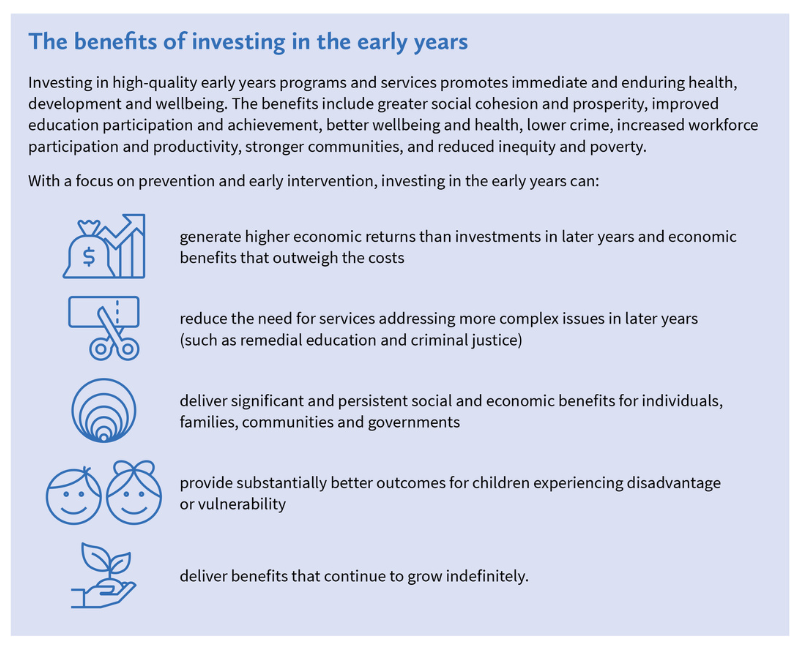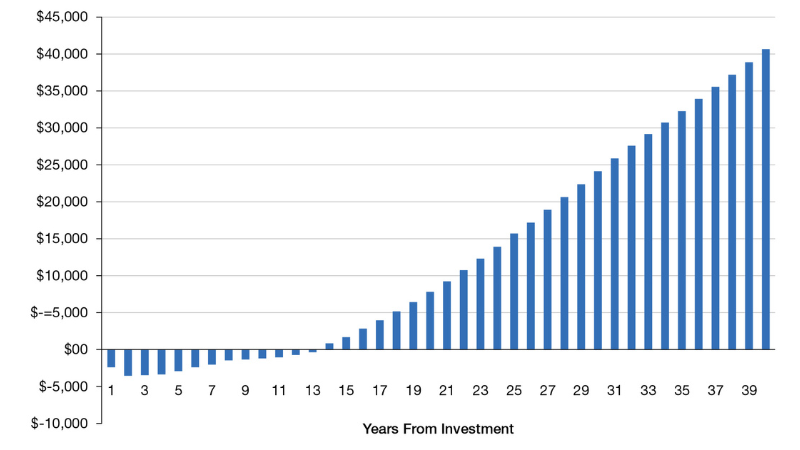Play2Learn+ is a Tasmanian early years service model designed to help children and families experiencing vulnerability to regularly attend preschool programs in the two years before starting school, and build carers capacity to support children’s learning and development.
This is based on the evidence that attending high-quality preschool improves children’s school readiness, and that two years of preschool are better than one.
The Centre for Community Health was commissioned by the Department of Social Services to examine the evidence on:
- the long-term impacts of school readiness on children’s health and wellbeing
- the key elements (or theory of change) of the Play2Learn+ program
- the cost-benefits of investments in early years services.
Tasmanian Play2Learn+ Trial: Evidence Review (PDF)
Summary of the benefits of investing in the early years (PDF)
The importance of quality early childhood education
We know that engagement with quality early childhood education and care (ECEC) programs such as preschool can improve children’s early development (Figure 1). By providing stimulating and rich learning environments, ECEC provides a significant opportunity to promote children’s healthy development, and support successful transitions to the school.
The quality of ECEC programs is important because children experiencing disadvantage are those who benefit the most from attending high-quality ECEC programs, but gain nothing and may even be harmed by attending low quality programs.
Figure 1. The benefits of investing in the early years

Source: Tasmanian Play2Learn+ Trial: Evidence review (2022).
The cost-benefits of the early years
What has become increasingly apparent is that these benefits of investing early continue to grow indefinitely (Figure 2). Studies of children who received high-quality early childhood programs and have been followed into adulthood have found that the benefits persist and are also evident in their own children.
Figure 2. Economic costs and benefits of early years investments

Source: Economic evaluation of early childhood early childhood education (Lee et al., 2012).
There is a strong case for starting ECEC earlier than 3 years to provide support for early parenting and family functioning. The value of attending 3 and 4-year-old preschool would be greatly enhanced if programs and services built upon effective childcare and family support programs during the first 1000 days and beyond.
Play2Learn+
The Evidence Review found there is good evidence underpinning the Play2Learn+ program’s key elements. When combined, these elements aim to improve carer capacity and early childhood development in the short term, as well as educational employment, justice and health and wellbeing outcomes over the long term. Key elements of the service model include:
- target families experiencing disadvantage who are not accessing early childhood education support.
- provide 3–4-year-olds and their careers with targeted playgroups and 1:1 support
- support participation in Launching into Learning prior to entering kindergarten
- continue support in the first three months of kindergarten to ensure a smooth school transition.
The Evidence Review suggests the program is likely to succeed in delivering its proposed benefits to children and families involved, provided the service model is implemented in ways that are consistent with best practice and are of high quality.
Publications
- Moore, T.G. and Arefadib, N, (2022) Tasmanian Play2Learn+ Trial: Evidence Review. Prepared for the Australian Government Department of Social Services. Centre for Community Child Health, Murdoch Children’s Research Institute, Parkville, Victoria. https://doi.org/10.25374/MCRI.21521250